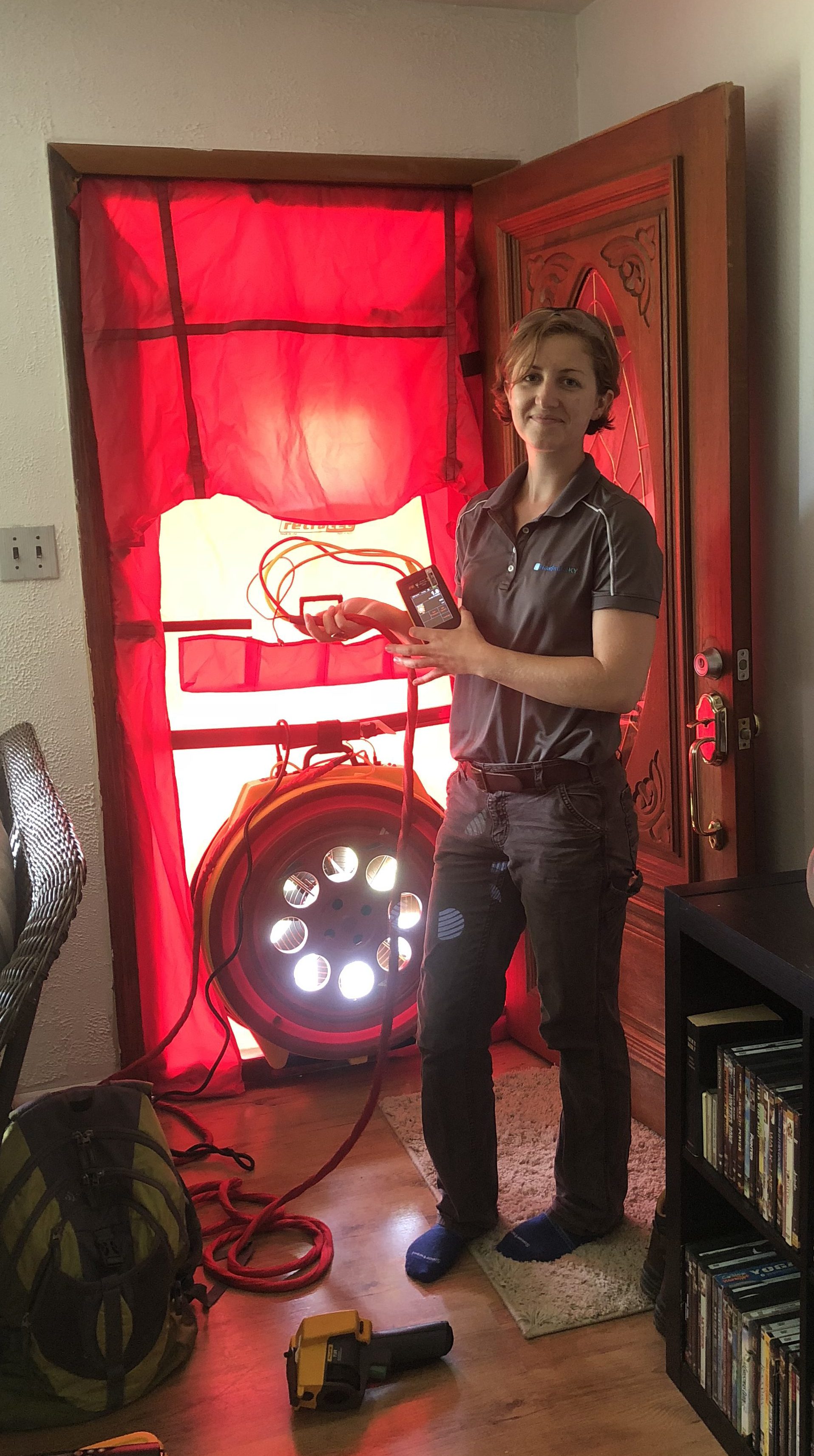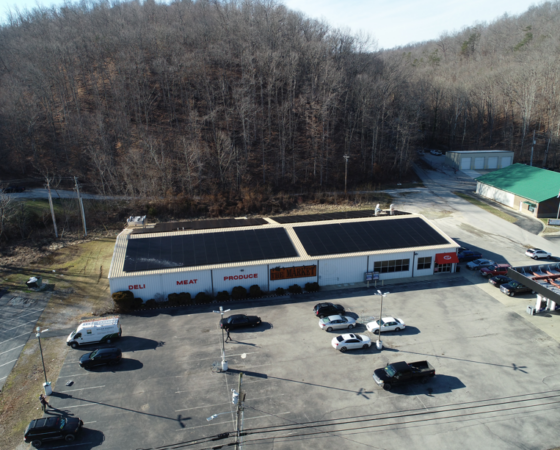I recently spent the weekend with my parents in their new home, a two-story Victorian-style house in northern Kentucky. Upon moving in, they immediately hired a painter, began purchasing new furniture, and settled in peacefully.They did not pause to think about the cost of energy, or the comfort and health of their indoor environment. Although they work long hours, and have done so for most of their adult lives, they’re financially able to handle the many costs of home ownership.

The next day, in my role as a residential energy specialist at MACED, I drove into eastern Kentucky, to work with a MACED New Energy Intern working with a housing non-profit in the region. We were there to do low-cost retrofits, such as air and duct sealing, as part of a campaign to introduce eastern Kentuckians to what an energy audit can offer, and demonstrate the savings that can come with retrofits that have little upfront cost.
The house where we arrived that day very clearly had structural issues. Feral cats were living under the home, and had torn down much of the insulation in the crawl space where they had created a nest. This kind of issue is not only problematic to the home’s integrity and the energy required to heat and cool it, but to the health of the residents as well. A recent study showed that 50 percent of the air breathed in a home comes in through the crawl space.
The residents suffer from seasonal allergies, asthma, and one person suffers from a severe medical condition. The home was extremely leaky when tested, and several small pests had infiltrated the home. We definitely had an opportunity to provide significant savings to the residents by air sealing, which also keeps pests out. We were able to decrease the home’s leakage by 20 percent that day, translating to an estimated annual savings of $120 for the family.
I was struck by the contrast between my parents’ housing and the house the family was living in in just a few hours away. It reminded me that people in different socio-economic groups have very different lived experiences. We are often blind to our own privilege and to the struggles of under-resourced individuals and families. It’s striking that apart from the obvious differences in housing, there are often less obvious health impacts resulting from sub-standard housing. I’m most surprised when I ask people if they are aware of programs that might assist them – whether government aid, a non-profit organization or otherwise. The common response is, “Why would I ask for help when no one is going to help me?” As a person raised with in a family with advantaged socio-economic status, I have learned that help is always available. That is not everyone’s experience. Often, those that need the most help find doors closed to them.
People living without adequate resources to meet their basic needs often feel disempowered and alone. Our popular culture characterizes under-resourced individuals as less-than – less industrious, less thrifty, just less. There is a belief that they are satisfied with living in substandard housing. My experience, however is that those living in sub-standard housing are not satisfied. They simply don’t have a choice. Folks will often apologize to me for the condition of their home. I try to reassure them that I’m there to serve them and not judge them but I can still feel their discomfort with having me in their home.
The work MACED is doing creates space for conversations across socioeconomic lines, and connects people to one another around issues that need to be addressed in our communities and in our culture. I often find that a conversation about energy efficiency can open doors to many other topics such as comfort, financial savings, local business ideas, and individual health. I am glad to have the opportunity to work with MACED and serve and learn from folks who don’t have access to the resources that I grew up with.





